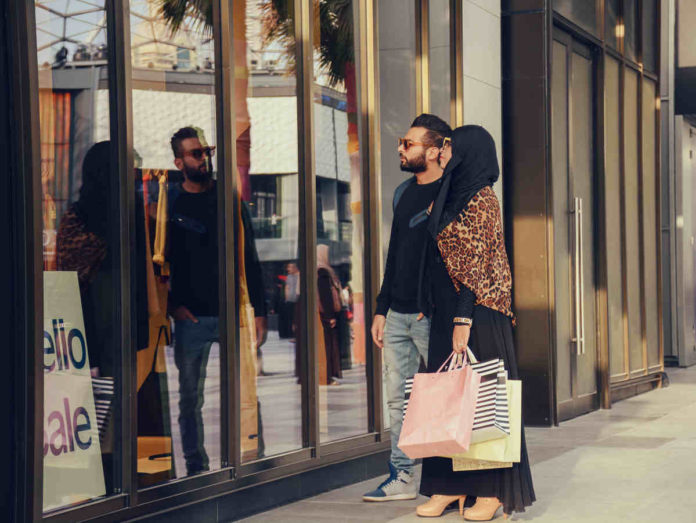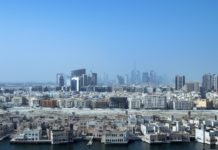Retail sales across four Gulf countries – Oman, Kuwait, Saudi Arabia and the United Arab Emirates are projected to increase by more than $24 billion over the next five years, with Oman’s retail industry expected to rise 9.3 per cent during that period, according to global research firm Euromonitor International.
Oman’s retail industry to rise to $11.3 billion by 2023
Research from the company indicates that Oman’s retail industry was worth $10.3 billion in 2018 and is forecast to steadily rise to $11.3 billion by 2023. While store-based retail is expected to continue to dominate, with it currently accounting for $10 billion of the overall market in Oman, non-store retail, including online shopping, is expected to grow by 68 per cent from 2018 to 2023.
Euromonitor’s research reveals that Oman is all set to capitalise on the rise in consumerism thanks to favourable demographics, a rise in population and a strong growth trajectory in tourism and per capita income.
A strong contributor to the growth of the sector is proactive initiatives being taken by the government in streamlining the retail infrastructure and strengthening the investment and tourism landscape.
Keeping up with this trend, the brick-and-mortar retailers are expected to gradually adopt the omnichannel business model to establish an intuitive and smart communication with consumers across online and offline platforms.

Larger contribution to Oman’s GDP
The accomplishments made by the retail sector in Oman are today, making their mark on the economic scene. Over the years from 2015 to 2017, the retail sector has contributed around eight per cent to the Gross Domestic Product (GDP), representing an annual contribution of over rial Omani two billion.
The optimistic view regarding this promising sector is built on facts and figures, as it is expected to achieve development of more than $300 billion in the GCC region by 2021. Experts in the sector expect it to develop in the Sultanate over the next three years to account for 10 per cent of the GDP, based on forecasts of growth of the tourism sector thanks to a widening network of airports. This means that Oman is poised to create thousands of direct and indirect jobs.
Shopping malls are being built across the country at a fast rhythm, as large construction cranes compete for dominance of the skyline of Oman. Although the long-term fundamentals remain strong, the retail market in Oman is presently under pressure due to economic slowdown.
The impact on the retail sector has been higher compared to its GCC counterparts. Weak consumer sentiments, on account of subsidy cuts, are the major factor behind the drastic decline in retail sales. Consumers are becoming cautious and focusing on buying essential items. Their spending power may further come under pressure, as the government plans to introduce taxes in 2019, especially value added tax (VAT).
Enhanced retail experience
Oman’s retail landscape is concentrated in the hands of standalone retail outlets and has several regional and international retailers. As consumers look for a wholesome shopping experience combined with entertainment, the retail market in the country is transforming to accommodate large leisure shopping complexes.
Supply of retail space has gained steam in the last few years, which saw the addition of large shopping centers like the Mall of Muscat, Al Araimi Boulevard, Avenues Mall, Oasis Mall, and Panorama Mall, among others. The organised malls and standalone retail outlets are largely concentrated in Muscat. There are many retail projects underway, including Palm Mall Muscat and some community centres.
Mall of Muscat

The Mall of Muscat in Ma’abela was inaugurated in April 2019. It boasts of the region’s largest aquarium spread over 8,000 square metres.
The Oman Aquarium has 92 acrylic panels with a total weight of 81 tonnes. It has many fascinating exhibits including a walk-through tunnel. Spread over three floors it features a demi-tunnel running through part of the main tank. The aquarium has over 30,000 marine creatures in addition to 1,000 types of fish.
Built by the Al Jarwani Group, Mall of Muscat has many attractions including a Novo Cinema with 14 screens and over 200 retail outlets. Another attraction is the Snow Park covering over 5,600 square metres on the third level. The Snow Park is expected to open in the latter part of 2019.
Al Araimi Boulevard

In December 2018, the Al Raid Group’s Al Araimi Boulevard, developed with an investment of over RO100 million, was officially inaugurated. Located in Al Khoud, the built up area of 187,000 square metres provides leasable space of 75,000 square metres and more than 210 stores ranging in area from 70-160 square metres.
It has a family entertainment centre of 6,000 square metres. Al Araimi Boulevard will have 10 cinema screens and a Carrefour hypermarket, which will occupy an area of 10,000 square metres. It will also be home to 20 casual dining restaurants with a food court that seats up to 1,200 people. There are 3,000 car parks available at the mall.
The mall also offers a variety of entertainment experiences, including a trampoline park, a virtual reality centre as well as the largest family entertainment centre in the Sultanate. The project will also allow young talented artists to showcase their work in a gallery, dedicated to hosting local and international artists.
Al Araimi Boulevard consists of two floors, providing spaces for water features, fountains and other unique features like green landscaped areas. It has the largest glass dome that allows daylight to enter without heat.
Enabling factors for retail spur
Increasing population and international tourist arrivals have been the vital driving forces of the retail market in Oman. A high composition of young and working-class has led to a shift in consumer preferences towards international foods and western products.
This is further supported by an increase in household spending power over the years on account of the economic diversification and government-mandated pay hikes for nationals.
The retail sector is attracting huge investments from major foreign retail chains, especially from neighbouring United Arab Emirates (UAE), as well as from home-grown businessmen.
This is considered as a vote of confidence in the growth of retail sector and the Sultanate’s economy, despite the ongoing economic slowdown in the aftermath of a fall in oil revenue. Major retail giants, including Majid Al Futtaim, Al Jarwani group (Palm Mall) and Lulu group, are all going ahead with their multi-million expansion plans as per their earlier plans. These groups are building malls, hypermarkets, and supermarkets not only in Muscat but also in several cities across the country.
It seems that the impact of a plunge in oil prices is not affecting the long-term investment plans of these retail majors. It is not far to seek the reasons for the firm investment decision.
The government has initiated major strategies to tide over the fiscal challenges, which is expected to prop up the Sultanate’s economic growth.
 This article was first published in the 2019-2020 edition of Progress (Al Takkadum). To reserve your copy of the annual bilingual publication, contact radhak@umsoman.com
This article was first published in the 2019-2020 edition of Progress (Al Takkadum). To reserve your copy of the annual bilingual publication, contact radhak@umsoman.com





